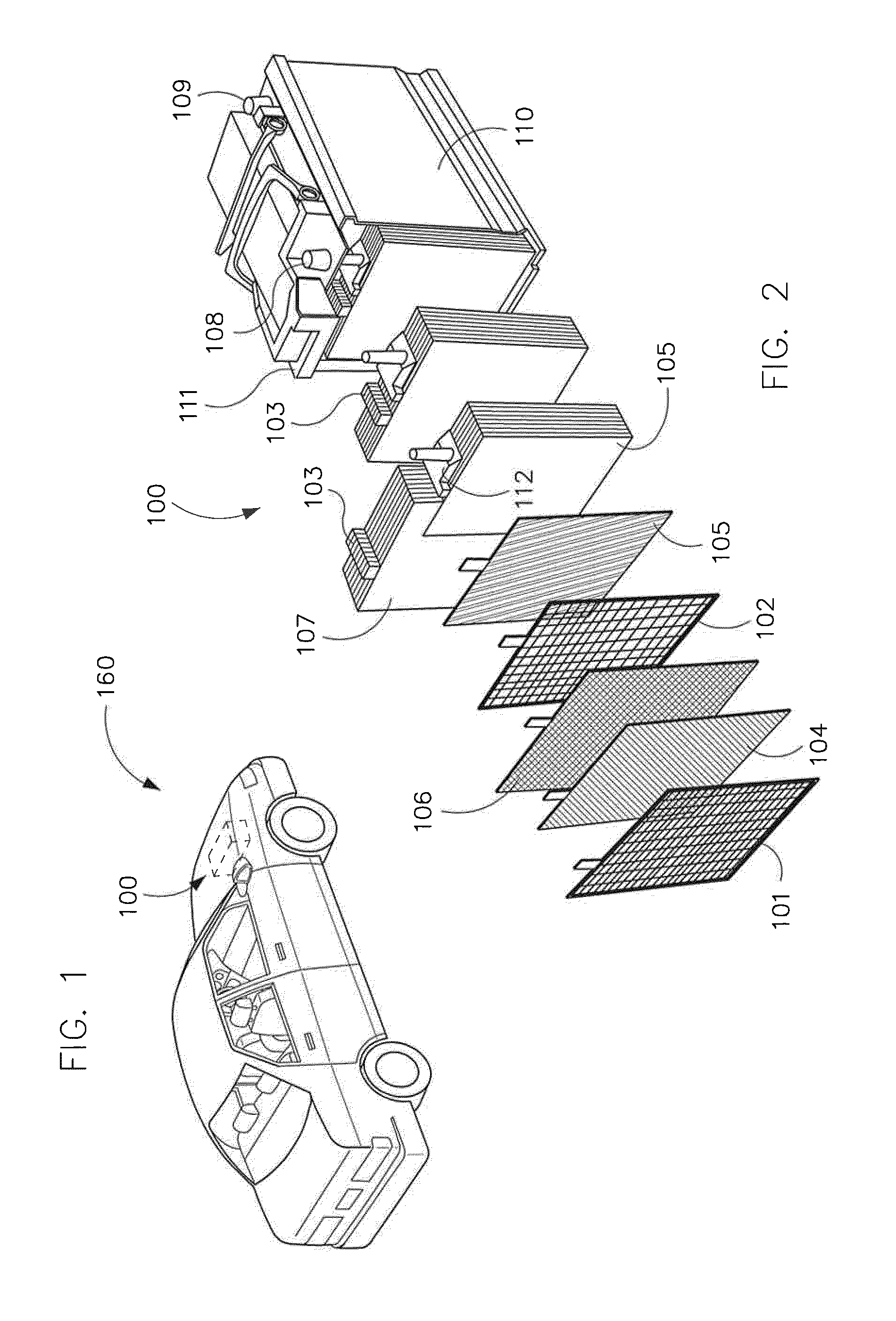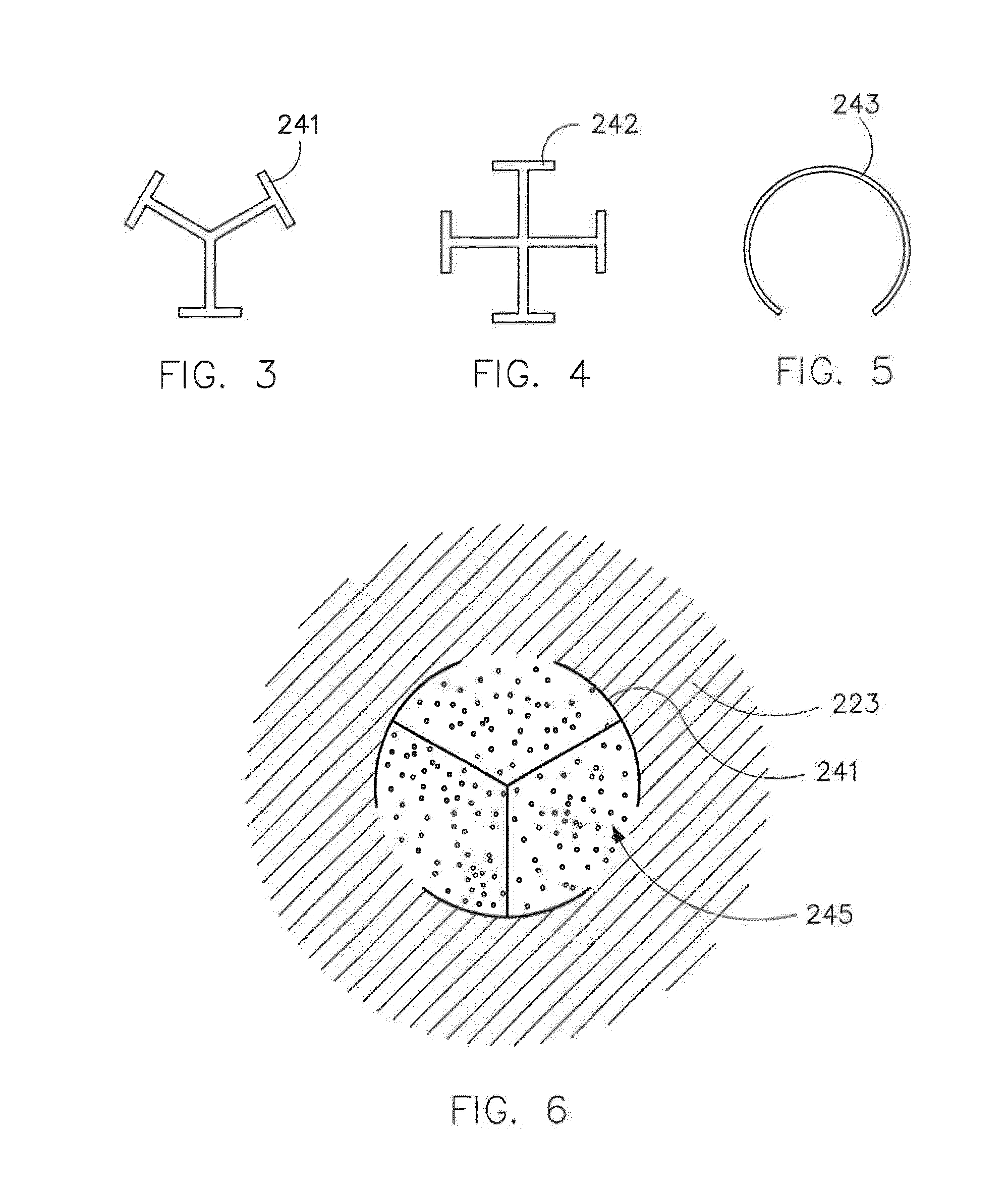Electrical power storage devices
a technology of power storage device and electrode, which is applied in the direction of sustainable manufacturing/processing, cell components, batteries, etc., can solve the problems of reducing the structural integrity of the electrode, underutilized or essentially wasted, and reducing the use of lead in conventional lead-acid electrodes. half of the lead in conventional lead-acid electrodes is unusable or goes unused
- Summary
- Abstract
- Description
- Claims
- Application Information
AI Technical Summary
Benefits of technology
Problems solved by technology
Method used
Image
Examples
Embodiment Construction
[0043]Referring to FIG. 1, a vehicle 160 is shown that includes an electrical power storage device 100 according to an exemplary embodiment. While vehicle 160 is shown as an automobile, according to various alternative embodiments, the vehicle may include any variety of types of vehicles including, among others, motorcycles, buses, recreational vehicles, boats, and the like. According to an exemplary embodiment, vehicle 160 uses an internal combustion engine (not shown) for locomotive purposes.
[0044]Electrical power storage device 100 shown in FIG. 1 is configured to provide at least a portion of the power required to start or operate vehicle 160 and / or various vehicle systems (e.g., starting, lighting, and ignition systems (“SLI”)). Further, it should be understood that electrical power storage device 100 may be utilized in a variety of applications not involving a vehicle, and all such applications are intended to be within the scope of the present disclosure.
[0045]Electrical powe...
PUM
 Login to View More
Login to View More Abstract
Description
Claims
Application Information
 Login to View More
Login to View More - R&D
- Intellectual Property
- Life Sciences
- Materials
- Tech Scout
- Unparalleled Data Quality
- Higher Quality Content
- 60% Fewer Hallucinations
Browse by: Latest US Patents, China's latest patents, Technical Efficacy Thesaurus, Application Domain, Technology Topic, Popular Technical Reports.
© 2025 PatSnap. All rights reserved.Legal|Privacy policy|Modern Slavery Act Transparency Statement|Sitemap|About US| Contact US: help@patsnap.com



